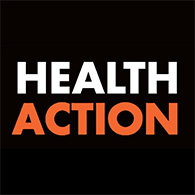Cardiovascular Health
Cardiovascular disease accounts for 1 in 3 U.S. adult deaths and disproportionately contributes to reduced life expectancy for Latino adults.
In Sonoma County, 26% percent of all deaths are due to heart disease. Heart attacks and strokes together are the leading cause of premature, preventable deaths for people under age 65. The risk factors for heart disease are well known: high blood pressure, diabetes, high cholesterol, tobacco use, poor diet, lack of physical activity, stress, and trauma. What are we doing about this? And just as importantly, what are we doing as a community about the root causes of these risk factors?
 Consider the story of Stacie, who grew up here in Sonoma County. Like too many people in our communities, Stacie's health and well-being are impacted by many circumstances in her life beyond her control. Where and how each of us grows up impacts on our lifelong health, and even our life expectancy. Right here in Sonoma County, people in some neighborhoods live 10 years longer than people in other neighborhoods just a few miles away.
Consider the story of Stacie, who grew up here in Sonoma County. Like too many people in our communities, Stacie's health and well-being are impacted by many circumstances in her life beyond her control. Where and how each of us grows up impacts on our lifelong health, and even our life expectancy. Right here in Sonoma County, people in some neighborhoods live 10 years longer than people in other neighborhoods just a few miles away.
Stacie’s story shows how the accumulating factors in her life have increased her risk for heart attack and stroke significantly. But Stacie’s story is not inevitable. At each point in the story, we have an opportunity to provide support that can help Stacie live a healthier life. We know what to do, and in fact many of these supports are already available in our community – they just need to be available to more people.
What We Are Doing
Local clinical and community partners are collaborating to prevent premature death and disability from heart attacks and strokes in Sonoma County as part of Hearts of Sonoma County, an initiative of the Committee for Healthcare Improvement. Hearts of Sonoma County health and social care partners are working together on shared strategies for improving cardiovascular health.
A Bit of History
Since 2014, HSC clinical partners have been sharing and pooling blood pressure control data to create a countywide report card on screening, diagnosing, and managing hypertension in adults, and to track collective improvement annually going forward.
In 2016, HSC began developing a "portfolio" of healthcare system and community-based strategies to prevent cardiovascular disease and improve heart health as part of the California Accountable Communities of Health Initiative (CACHI) grant awarded to Health Action.
In 2017, HSC launched the "It's Up to Us" campaign, led the Northern California Center for Well-Being and United Way of the Wine Country. This information and outreach campaign focused on educating the community about CVD risk factors, conducting community-based blood pressure screenings, and linking high-risk people to primary care to reduce risk of heart attacks and strokes.
Since 2018, Hearts of Sonoma County partners have worked collaboratively to strengthen and scale the Cardiovascular Portfolio of Interventions to improve lifelong heart health and reduce healthcare costs. Strategies in the Cardiovascular Portfolio include:
- Investing in the expanded implementation of Kaiser Permanente's PHASE* clinical initiative across local healthcare organizations (*Preventing Heart Attacks and Strokes Everyday)
- Deploying community health workers as care navigators to support patients' health and social needs
- Connecting patients to healthy food and nutrition education resources to improve hypertension and diabetes control
Working together to expand and coordinate these strategies will lead to preventing strokes and heart attacks in Sonoma County—not to mention avoiding economic and social costs due to fewer Sonoma County adults becoming disabled or dying prematurely from heart disease.
Management of Adult Hypertension Guidelines
Management of Adult Hypertension (PDF: 401 Kb)
Source: Hearts of Sonoma County.
Example Implementation of the Guidelines (PDF: 120 Kb)
Source: Redwood Community Health Coalition.
Article: Hearts of Sonoma County - Roadmap to Preventing Heart Attacks and Strokes
Source: Sonoma Medicine August 2015 issue

 Translate
Translate